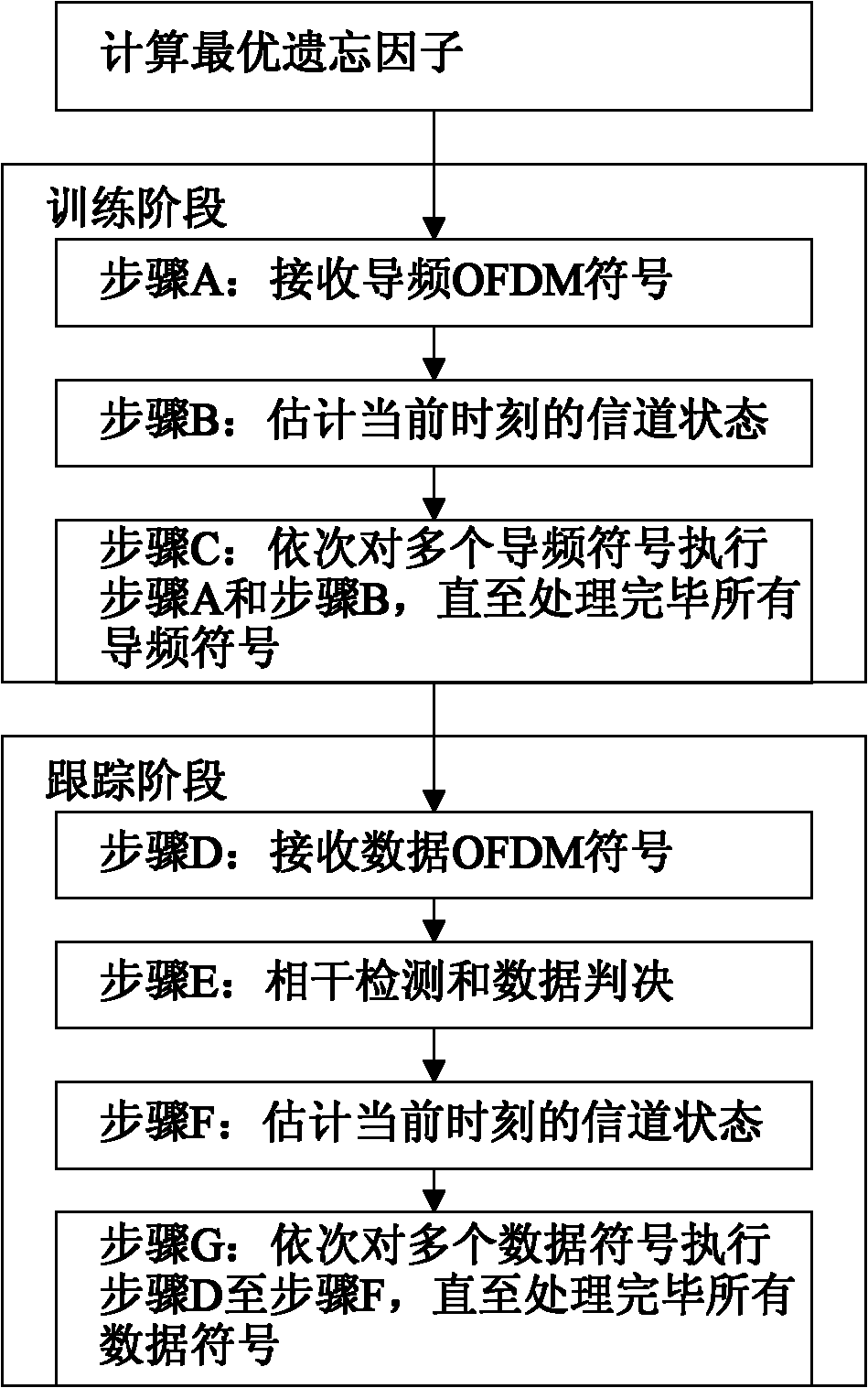Optimal forgetting factor-based semi-blind recursive least squared (RLS) channel estimation method
A forgetting factor and channel estimation technology, applied in the field of semi-blind recursive least squares channel estimation technology, can solve problems such as reducing system operation efficiency and increasing computing time.
- Summary
- Abstract
- Description
- Claims
- Application Information
AI Technical Summary
Problems solved by technology
Method used
Image
Examples
Embodiment Construction
[0044] In this embodiment, the Matlab2007b simulation platform is used for running experiments. OFDM system parameters: subcarrier 512, cyclic prefix 88, symbol bandwidth 10M, symbol period T s =60us, the number of pilot symbols is 4, and the number of data symbols is 20. The wireless channel environment is the Doppler frequency shift f d =200Hz COST207TU fading channel model, the channel autocorrelation function is the first kind of zero-order Bessel function J 0 (g), ie r(i,j)=J 0 (2πf d T s (i-j)).
[0045] Implementation steps such as figure 1 Shown:
[0046] I. Obtaining the optimal forgetting factor: Obtaining the optimal forgetting factor through a step-by-step traversal search algorithm. If the current SNR is 0dB:
[0047] First, within the interval [0.05, 0.95], iteratively calculates the MSE corresponding to different forgetting factor values with a step size of 0.1, such as MSE (i=50) when the 50th OFDM symbol is received. According to the MSE formula, w...
PUM
 Login to View More
Login to View More Abstract
Description
Claims
Application Information
 Login to View More
Login to View More - R&D
- Intellectual Property
- Life Sciences
- Materials
- Tech Scout
- Unparalleled Data Quality
- Higher Quality Content
- 60% Fewer Hallucinations
Browse by: Latest US Patents, China's latest patents, Technical Efficacy Thesaurus, Application Domain, Technology Topic, Popular Technical Reports.
© 2025 PatSnap. All rights reserved.Legal|Privacy policy|Modern Slavery Act Transparency Statement|Sitemap|About US| Contact US: help@patsnap.com



